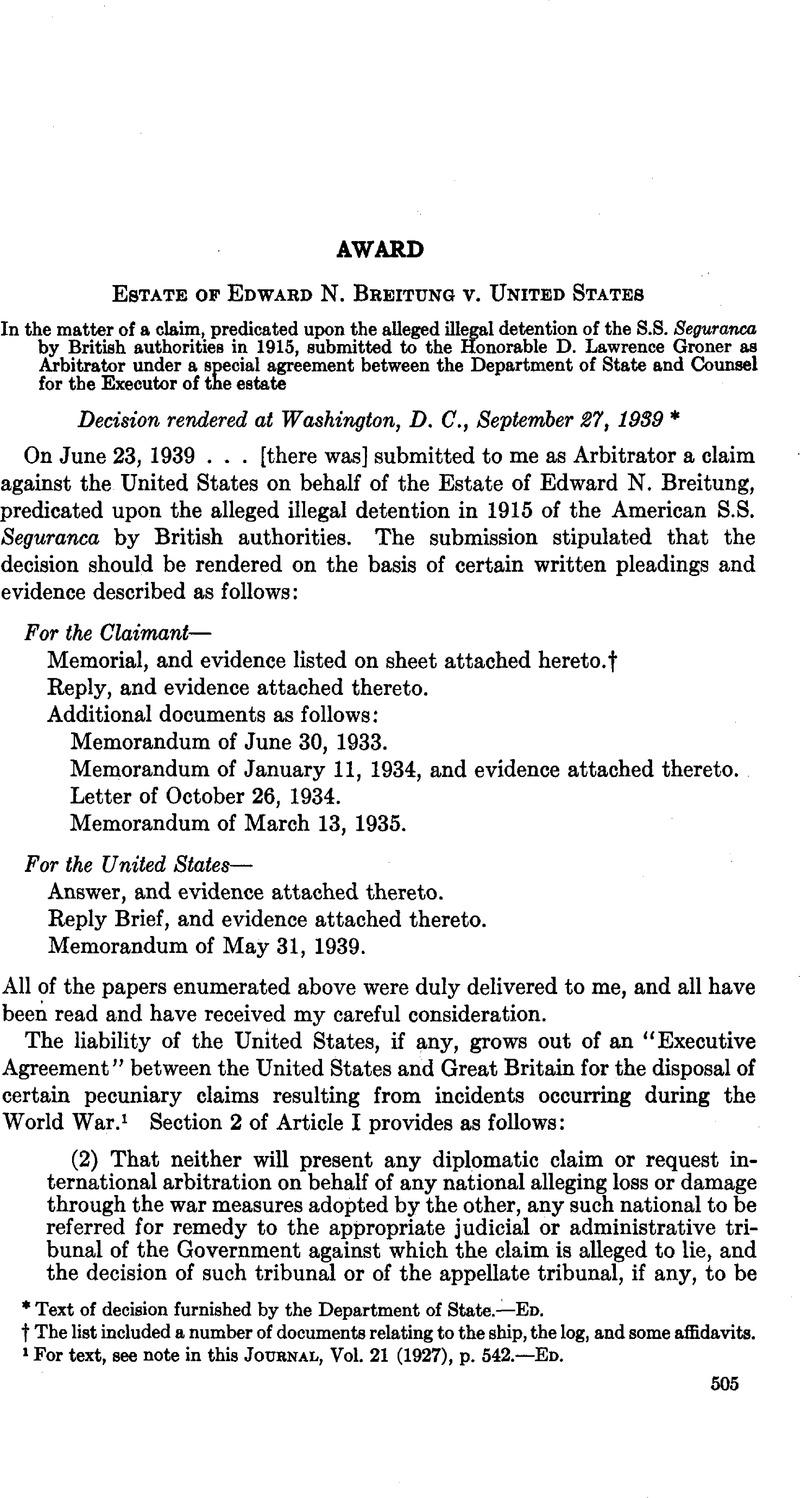No CrossRef data available.
Published online by Cambridge University Press: 12 April 2017

* Text of decision furnished by the Department of State.—Ed.
† The list included a number of documents relating to the ship, the log, and some affidavits.
1 For text, see note in this Journal, Vol. 21 (1927), p. 542.—Ed.
2 The French Prize Court found that Breitung had obtained the Dacia by transfer from von Novelly, E., who had in turn purchased her from the former German owners. Von Novelly had arranged the contract for shipment of the cotton to Bremen. In accordance with French prize law, the Dacia was condemned because her transfer to American registry was evade capture and to continue her in trade with the enemy. Foreign Relations of the U. S., 1915 Supp., p. 508. [See also this Journal, Supplement, Vol. 33 (1939), pp. 886–687.— ED.]Google Scholar
3 Telegram of Secretary Bryan to the Ambassador to Great Britain, dated March 30, 1915, Foreign Relations of the United States, 1915 Supp., p. 152.
4 Foreign Relations of the United States, 1915 Supp., p. 105.
5 The Kim, [1915] p. 215, 3 L.P.C. 167.
6 The Olinde Rodrigues, supra; The Springbok, 5 Wall. 1; The Dashing Wave, 5 Wall. 170; The Thompson, 3 Wall. 155.
7 The Stigstad, [1919] A.C. 279; The Sigurd, [1917] p. 250.
8 The Remonstrant, 6 L.P.C. 329, 341.
9 The Baron Stjernblad, [1918] A.C. 173, 175.
To send this article to your Kindle, first ensure no-reply@cambridge.org is added to your Approved Personal Document E-mail List under your Personal Document Settings on the Manage Your Content and Devices page of your Amazon account. Then enter the ‘name’ part of your Kindle email address below. Find out more about sending to your Kindle. Find out more about saving to your Kindle.
Note you can select to save to either the @free.kindle.com or @kindle.com variations. ‘@free.kindle.com’ emails are free but can only be saved to your device when it is connected to wi-fi. ‘@kindle.com’ emails can be delivered even when you are not connected to wi-fi, but note that service fees apply.
Find out more about the Kindle Personal Document Service.
To save this article to your Dropbox account, please select one or more formats and confirm that you agree to abide by our usage policies. If this is the first time you used this feature, you will be asked to authorise Cambridge Core to connect with your Dropbox account. Find out more about saving content to Dropbox.
To save this article to your Google Drive account, please select one or more formats and confirm that you agree to abide by our usage policies. If this is the first time you used this feature, you will be asked to authorise Cambridge Core to connect with your Google Drive account. Find out more about saving content to Google Drive.